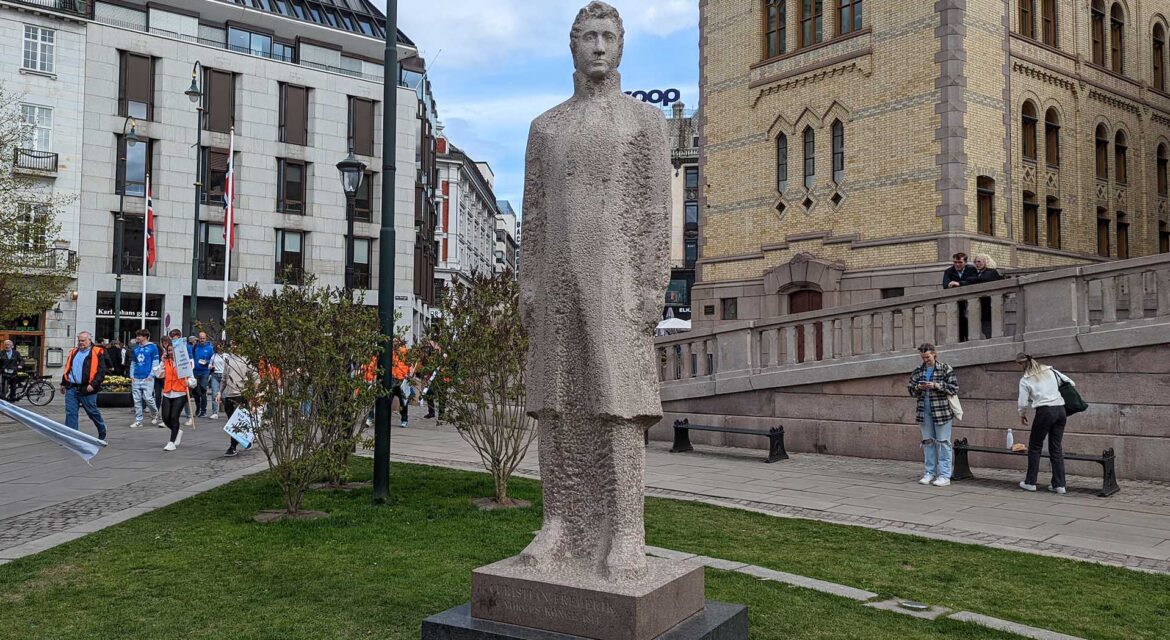 Residing in the middle of Oslo, the Storting is the Norwegian Parliament and one of the most important institutions in the country. As the supreme arena for political debate and decision-making in the Kingdom of Norway, the Storting has a legacy that permeates the country but the monuments that define the Storting building enable audiences to connect with this legacy in a profound manner.
Residing in the middle of Oslo, the Storting is the Norwegian Parliament and one of the most important institutions in the country. As the supreme arena for political debate and decision-making in the Kingdom of Norway, the Storting has a legacy that permeates the country but the monuments that define the Storting building enable audiences to connect with this legacy in a profound manner.

The “Great Thing” of Norway
 Established in 1814 by the Constitution of Norway, the Storting (“great thing”) is the supreme legislature of Norway. The Storting building began being used in 1866 and has become a focal point of the culture and history of the nation in that time. Outside the building stand numerous sculptures and landmarks that are intimately linked to both.
Established in 1814 by the Constitution of Norway, the Storting (“great thing”) is the supreme legislature of Norway. The Storting building began being used in 1866 and has become a focal point of the culture and history of the nation in that time. Outside the building stand numerous sculptures and landmarks that are intimately linked to both.
One of the most prominent of these pieces is a bronze sculpture of Carl Joachim Hambro, who served as the President of the Storting on two separate occasions. Erected in Eidsvolls plass in 1994, his reputation as an orator shaped his legacy in a literal way, as the plinth that he is leaning on can be interpreted as a lectern.
Elsewhere, a full-size figure of Wilhelm F. K. Christie, the first President of the Storting, was installed in 1989. The monument to King Christian Frederik resides in Eidsvolls plass. This gift from the Government to the Storting was part of the Bicentenary of the Constitution in 2014. A statue of Johan Sverdru, who was prime minister from 1884 to 1889, is also near the front of the Storting.
A bust of Christian Michelse, who was the first prime minister of independent Norway, resides directly in front of the Storting. Right off the main path is a seated sculpture of Christian Krohg, who was a painter and writer that made a major impact on Norwegian culture at the end of the 19th century.
All of these sculptures and monuments are interspersed among the greenery and paths in front of and alongside the Storting, allowing audiences to directly engage with these pieces and the Storting. Audiences can experience the legacy of the nation in multiple ways, highlighting the distinct connections that such landmarks can enable for audiences in the present and future.

An Approachable Legacy
 Parliament and government buildings around the world honor the legacy of the people and events that defined their nations in major ways. However, the monuments and statues around the Storting building do so in a manner that is both engaging and approachable, showcasing what it can mean for the legacy of individuals and an entire nation to truly come to life.
Parliament and government buildings around the world honor the legacy of the people and events that defined their nations in major ways. However, the monuments and statues around the Storting building do so in a manner that is both engaging and approachable, showcasing what it can mean for the legacy of individuals and an entire nation to truly come to life.

